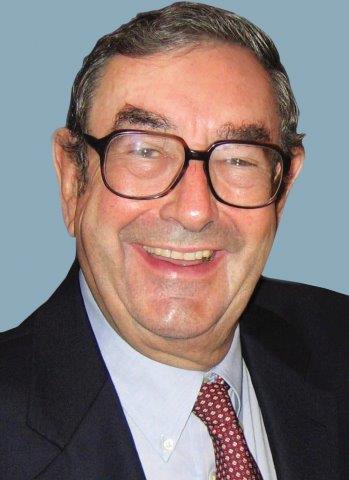EMBARGOED FOR RELEASE | September 09, 2013
General in the Solar Army to high school and college students: ‘We are recruiting’
Note to journalists: Please report that this research was presented at a meeting of the American Chemical Society.
A press conference on this topic will be held Tuesday, Sept. 10, at 10:30 a.m. in the ACS Press Center, Room 211, in the Indiana Convention Center. Reporters can attend in person or access live audio and video of the event and ask questions at www.ustream.tv/channel/acslive.
INDIANAPOLIS, Sept. 9, 2013 — High school and college students got a recruiting call today to join the Solar Army and help solve one of the 21st century’s greatest scientific challenges: finding the dirt-cheap ingredients that would make sunlight a practical alternative to oil, coal and other traditional sources of energy.
It came at the 246th National Meeting & Exposition of the American Chemical Society (ACS), the world’s largest scientific society, from a great scientist and pioneer in solar energy research, whose leadership in the Solar Army movement has seen his title sometimes morph from “doctor” to “general.” The meeting, which continues here through Thursday, features almost 7,000 presentations on new discoveries in science and other topics.
“Enough sunlight falls on Earth in one hour to provide all of the world’s energy — for 7 billion people — for an entire year,” said Harry B. Gray, Ph.D., leader of the army. He is the Arnold O. Beckman Professor of Chemistry and Founding Director of the Beckman Institute at the California Institute of Technology. “If we can capture that energy and use it to split water, burning coal, gasoline and other fossil fuels will be history.
“We won’t have to buy oil from other countries. We will stop releasing so much greenhouse gas into the atmosphere. And we will have a sustainable fuel renewed with each sunrise. We’ve organized the Solar Army to recruit student volunteers to help make this dream a reality. These kids will make the difference as to whether we’ll have solar energy. This is the future of the planet. And it’s your future, too.”
Gray discussed the Solar Army, advances being made by his own research group and other topics during the “Kavli Foundation Innovations in Chemistry Lecture,” one of the major talks at the meeting. Sponsored by The Kavli Foundation, a philanthropic organization that supports basic scientific research, Gray’s talk is part of a series designed to address the urgent need for vigorous outside-the-box thinking by scientists as they tackle the world’s mounting challenges, including climate change, emerging diseases and water and energy shortages.
The Solar Army was the brainchild of Bruce Parkinson, Ph.D., a chemistry professor at the University of Wyoming. Parkinson got the idea for the army’s basic tool — the Solar Hydrogen Activity Research Kit (SHArK). Now used by hundreds of students in classrooms around the world, it enables students to look for inexpensive catalysts that can absorb sunlight and use that energy to break down water into its components, hydrogen and oxygen.
Catalysts are the key to producing more than $1 trillion worth of everyday products annually, ranging from gasoline and medications to food and agricultural fertilizer. Without catalysts, the chemical reactions needed for these products would not happen or would occur too slowly for commercial use.
Gray explained that no known stable material can efficiently and inexpensively break water down into hydrogen and oxygen with visible light. That breakdown would yield clean-burning hydrogen, which could be burned by itself as a fuel or used in fuel cells to make electricity. Foot soldiers in the Solar Army will use their SHArKs to search for these “metal oxide semiconductors” in a campaign that may involve checking millions of combinations of the elements on the periodic table. Students share their findings on the SHArK website.
Students in 100 classrooms across the U.S., Canada, Europe and North Africa are searching for these catalysts as soldiers in the Solar Army. To enlist, contact Jennifer Schuttlefield Christus, Ph.D., at the University of Wisconsin-Oshkosh.
Gray said that tours of duty in the Solar Army have benefits for students.
“With this project, students are learning how to do real science and affect the very future of our planet,” he explained. “Kids are getting hands-on experience with scientific research, and that experience has sparked innumerable careers in science, technology, engineering and math,” Gray added.
The Solar Army concept has moved ahead with renewed funding from the National Science Foundation’s Center for Chemical Innovation program. Gray leads the center, which consists of 19 research teams at 13 institutions.
In the Kavli lecture, Gray discussed advances toward affordable solar energy being made in his own and other research groups. One of their greatest challenges, he said, is finding catalysts and other materials for efficient solar energy technology that are inexpensive and durable. Sunlight has brutal effects on materials, and plants cope with that by renewing the key substances needed for photosynthesis about every 30 minutes. The materials needed for devices that mimic photosynthesis must last for years, with little deterioration in performance.
To automatically receive news releases from the American Chemical Society, contact newsroom@acs.org.
# # #
The American Chemical Society is a nonprofit organization chartered by the U.S. Congress. With more than 163,000 members, ACS is the world's largest scientific society and a global leader in providing access to chemistry-related research through its multiple databases, peer-reviewed journals and scientific conferences. Its main offices are in Washington, D.C., and Columbus, Ohio.
Media Contact
During the national meeting, Sept. 6-11, the contacts can be reached at 317-262-5907.
Michael Bernstein
m_bernstein@acs.org
202-872-6042
Michael Woods
m_woods@acs.org
202-872-6293






